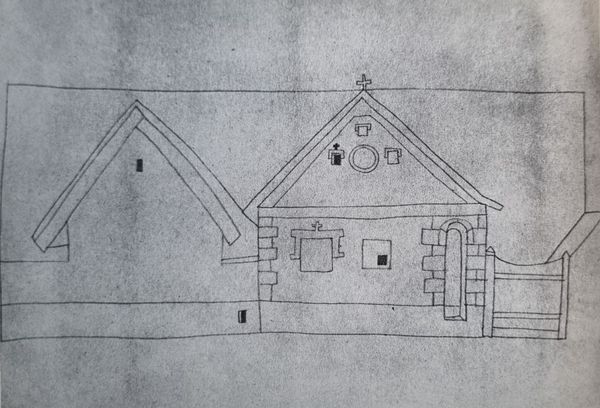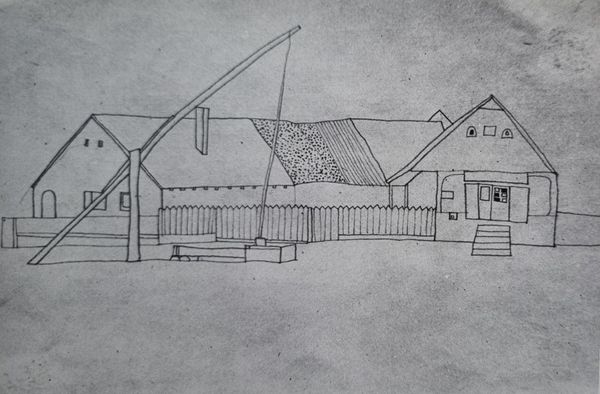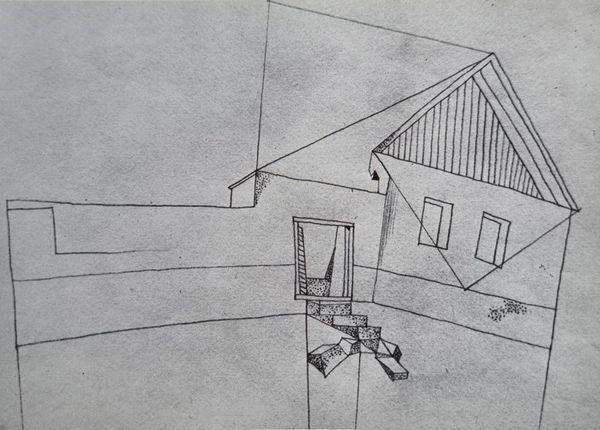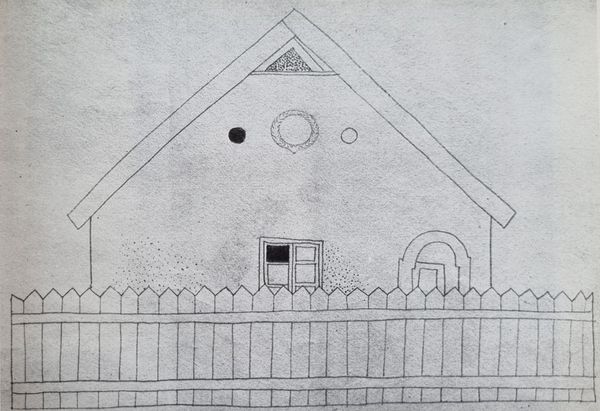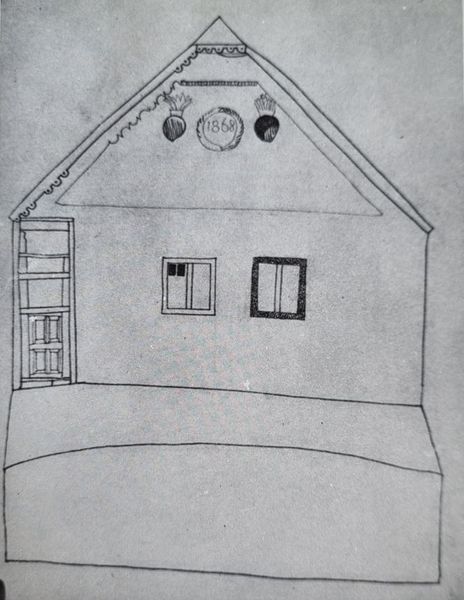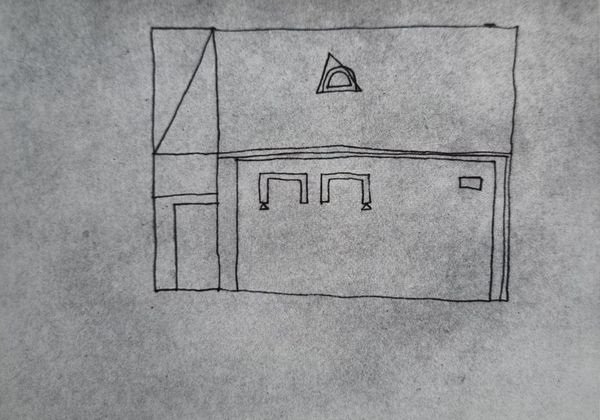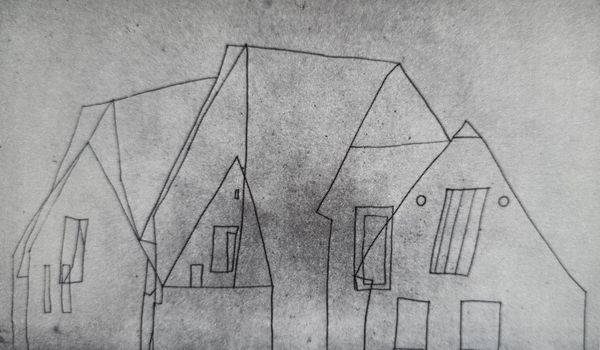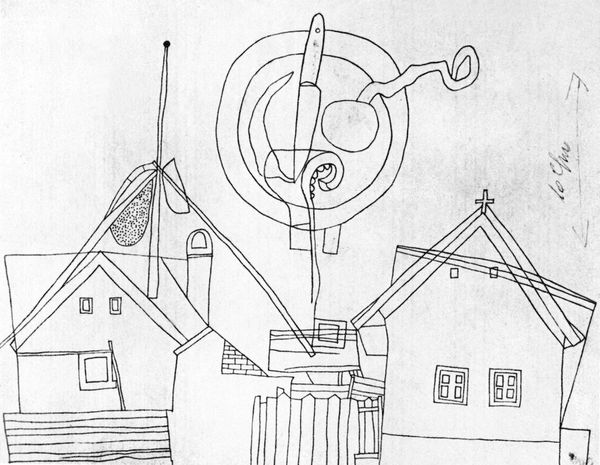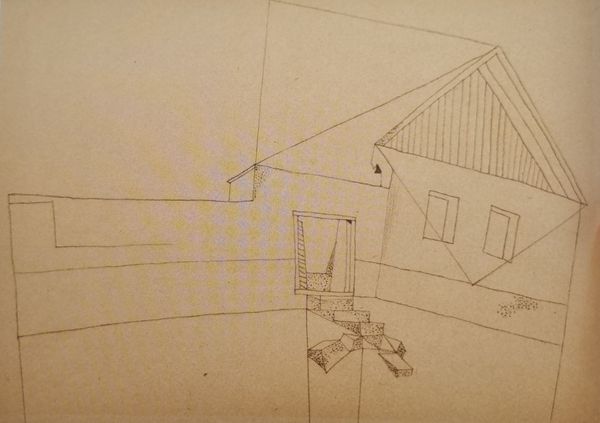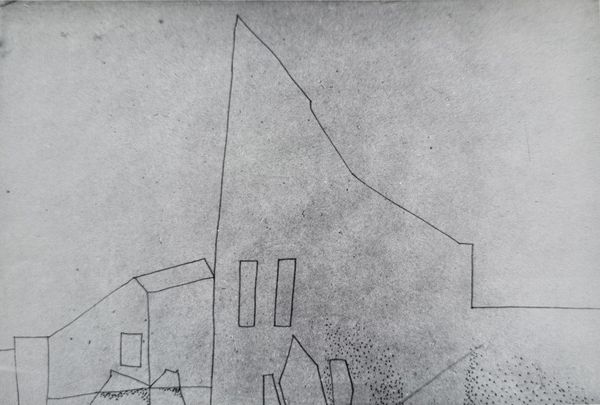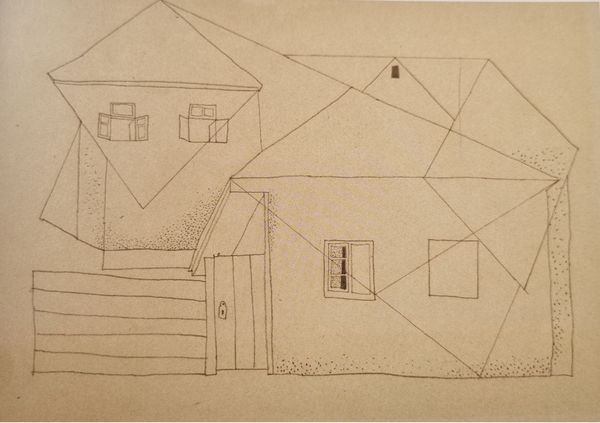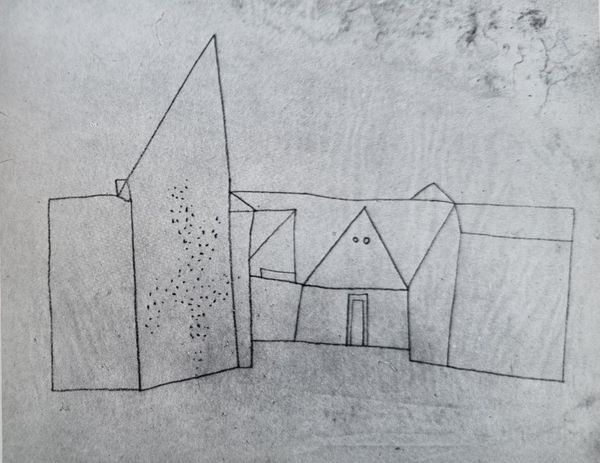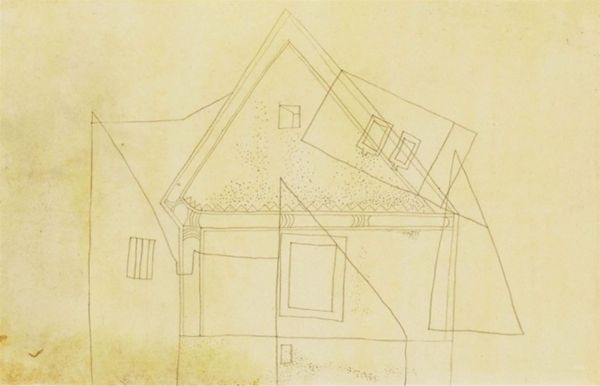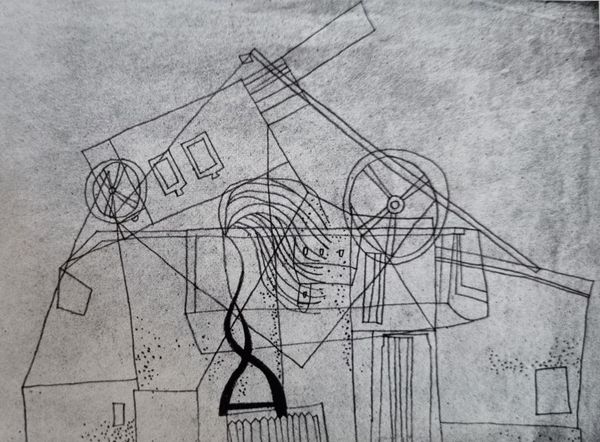
drawing, ink
#
drawing
#
amateur sketch
#
quirky sketch
#
sketched
#
sketch book
#
incomplete sketchy
#
landscape
#
personal sketchbook
#
ink
#
abstraction
#
line
#
sketchbook drawing
#
quick sketch
#
sketchbook art
#
initial sketch
Copyright: Public domain
In this drypoint from 1936, Vajda Lajos presents us with the Fiala House using a stark palette of blacks and grays. The composition is striking: sharply defined lines articulate the architectural forms, distilling them into geometric components, evoking a sense of austere simplicity. Vajda's structured approach mirrors the principles of structuralism, where underlying systems shape what we see. The house is more than just a building; it is part of a language of forms. The precise lines and geometric shapes, while representational, hint at a deeper symbolic order. The lack of ornamentation pushes the structure to the forefront, where the interplay of lines creates a network of relationships that invite decoding. The use of minimalist forms prompts a re-evaluation of spatial and representational conventions, inviting us to see beyond the surface and engage with the conceptual frameworks underlying the artwork.
Comments
No comments
Be the first to comment and join the conversation on the ultimate creative platform.
